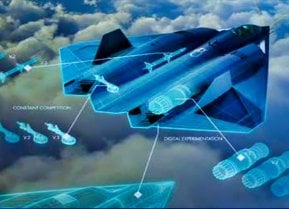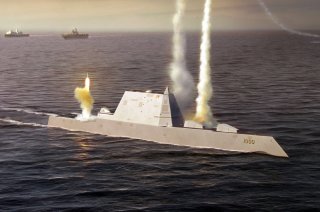The U.S. Navy's Zumwalt-Class Destroyer Is One Historic Nightmare
The Zumwalt-class destroyer, initially heralded as the future of the U.S. Navy with a planned purchase of 32 units, saw its orders dramatically reduced to just three ships due to soaring costs and practical shortfalls.
Summary: The Zumwalt-class destroyer, initially heralded as the future of the U.S. Navy with a planned purchase of 32 units, saw its orders dramatically reduced to just three ships due to soaring costs and practical shortfalls.
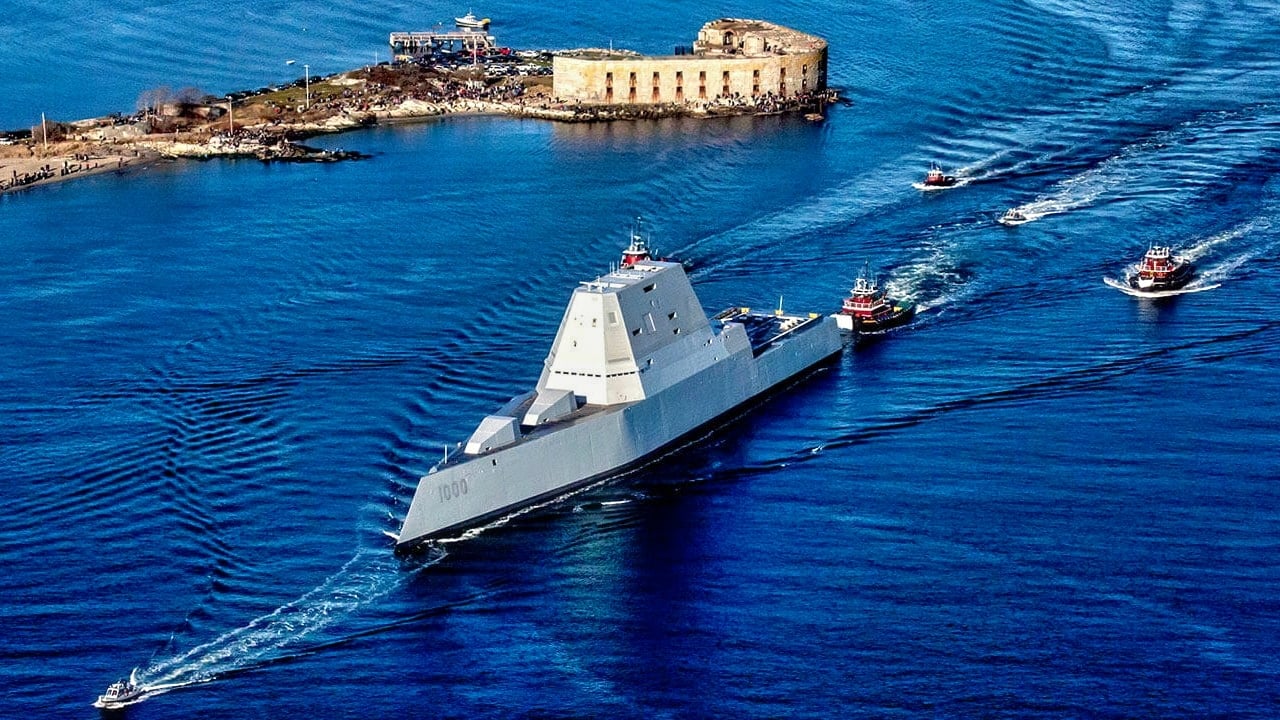
-Each Zumwalt destroyer, costing $8 billion, failed to justify its investment, particularly because its advanced stealth technology, featuring a low radar cross-section and a unique tumblehome hull design, proved less advantageous in real-world naval operations close to shore.
-The program's shortcomings led to a critical reassessment, highlighting issues within the defense procurement system and shifting focus back to the more traditional and cost-effective Arleigh Burke-class destroyers.
Zumwalt-Class Destroyers: From Navy's Hope to High-Cost Cautionary Tale
The U.S. Navy unveiled the Zumwalt-class destroyer with great fanfare. Billed as the future of the fleet, the Zumwalt was expected to be ordered in great numbers – the Navy planned to buy 32. But a ballooning budget and performance shortfalls dampened enthusiasm for the Zumwalt – so much so that the Navy canceled orders for all but three Zumwalts and instead stuck with its aging yet cost-effective Arleigh Burke-class destroyers.
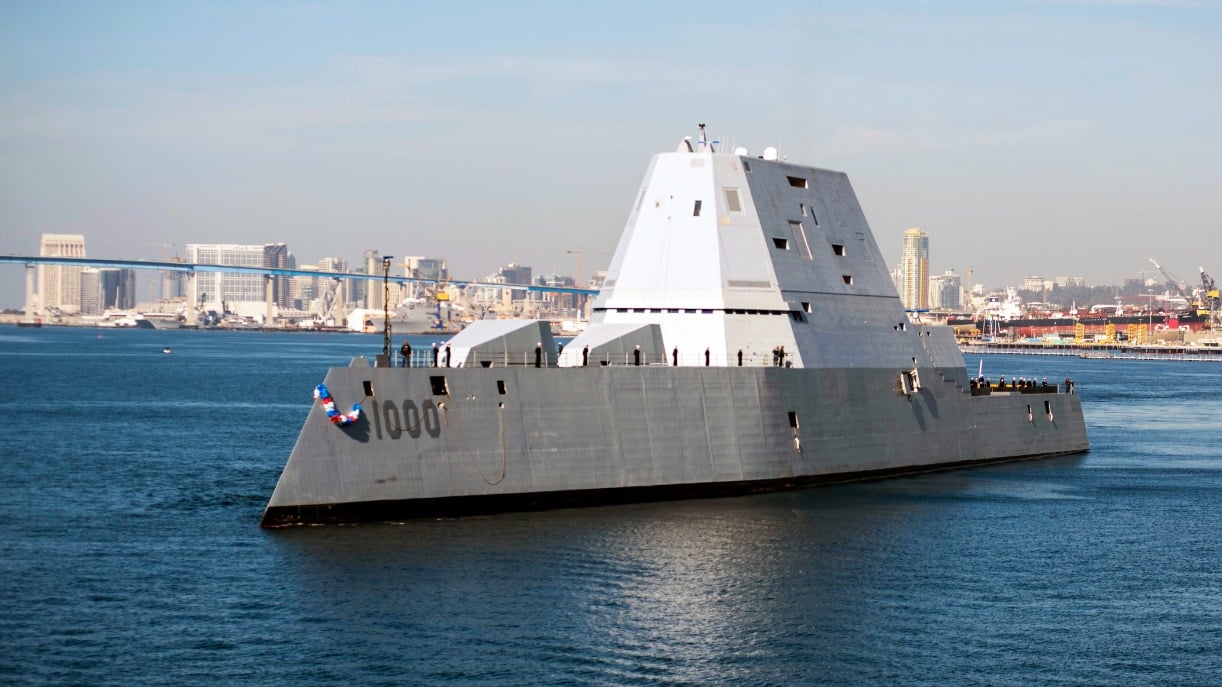
What Went Wrong?
The Zumwalt was built with an emphasis on stealth technology. It had a low radar cross section that would help it operate close to shore while avoiding detection. The Zumwalt’s designers were indeed successful in building a stealthy ship. Despite being 40% bigger than the Arleigh Burke, the Zumwalt has a radar cross section similar to that of a fishing boat.
The secret to the Zumwalt’s low radar cross section was in the hull shape. The Zumwalt incorporates a tumblehome-style hull, which narrows notably above the waterline. The tumblehome stands out today, but the shape is hardly novel. Wooden warships were commonly built in the style, and the shape had a small renaissance in the late 19th century. It quickly fell out of favor when three tumblehome-shaped Russian battleships were sunk during the Russo-Japanese War. More than 100 years later, navies are pursuing stealth designs, and the tumblehome is viable again.
The tumblehome shape is not the only feature lowering the Zumalt’s radar cross section. The vessel was built with a composite deckhouse encasing the ship’s sensory and electronic equipment. The composite materials are difficult for radar to detect. Between the hull shape and the composite materials, the Zumwalt is about 50 times harder to locate on radar than the Arleigh Burke.
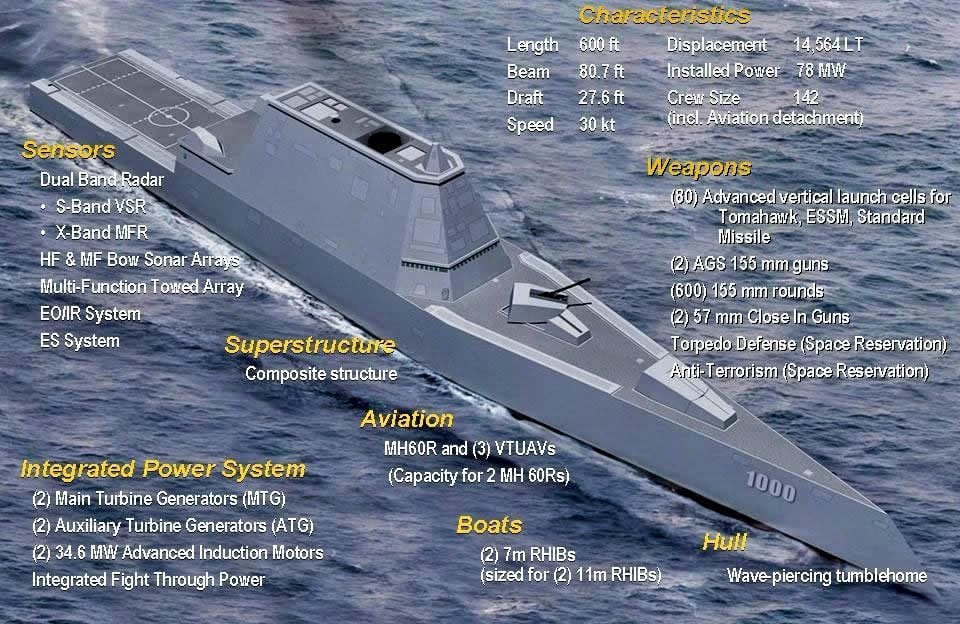
Complementing the Zumwalt’s stealth properties are the vessel’s acoustic properties. The Zumwalt is very quiet indeed, its acoustic signature more consistent with a Los Angeles-class submarine than with an Arleigh Burke destroyer.
But in practice, the pursuit of stealth characteristics held the ship back in important ways.
The vessel was built to provide fire support against land-based targets, meaning the Zumwalt would be operating in crowded and close-to-shore environments. Stealth properties aren’t actually of much use here, because the enemy can just scan the horizon with their binoculars when they want to find a vessel. Even if they failed to see it, the vessel would announce its location as soon as the Zumwalt fired its weaponry. So in practice, the Zumwalt’s low radar cross section didn’t count for much.
A Bad Investment
The Zumwalt program cost the Navy $24.5 billion. With only three ships delivered, the Zumwalt cost $8 billion per ship. This is a very bad investment. Wisely, congressional representatives began asking why a destroyer was costing taxpayers so much money. The line of inquiry led to the cancellation of further orders.
Mike Fredenburg summed up the Zumwalt program with a scathing review, calling the ship an “unmitigated disaster” and a “ship without a mission” that was “emblematic of a defense procurement system that is rapidly losing its ability to meet our national security needs.”
About the Author: Harrison Kass
Harrison Kass is a defense and national security writer with over 1,300 total pieces on issues involving global affairs. An attorney, pilot, guitarist, and minor pro hockey player, Harrison joined the US Air Force as a Pilot Trainee but was medically discharged. Harrison holds a BA from Lake Forest College, a JD from the University of Oregon, and an MA from New York University. Harrison listens to Dokken.
